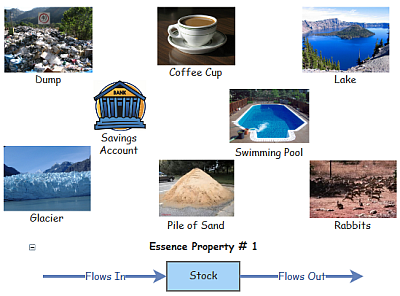
Web of wonder: Three model structures [Systems thinking & modelling series]
This is part 5 of a series of articles featuring the book Beyond Connecting the Dots, Modeling for Meaningful Results.
New patterns – A better way
In 1937 Ludwig von Bertalanffy first proposed that the same basic structures operated across all disciplines. He suggested that if a person learned how these structures operated they could transfer much of their learning from one discipline to another1. When moving from one discipline to another, one would simply have to learn the structures that were operating, and the labels on the elements of the structures. On first reading this may seem most profound, or maybe even preposterous. However, if you think about it, there may be some truth to it after all.
We’re not asking you to simply believe the previous statement. We expect this continued learning experience will reinforce the logic of this statement from your own perspective. The set of common properties presented in the next three interactive learning environments (ILEs) are considered to provide an essence of understanding.
“Essence Property # 1” should provide a very different view of the world around you.
Finding the common among the different.
Need help? See the Model instructions
Did you realize that while the structure demonstrates a property of growth, growth is not a property you can find in any of the individual components? This is what is called an emergent property. All models have one or more emergent properties. Have you ever heard the statement “The whole is greater than the sum of its parts”? This is an example of what that statement implies.
| Exercise 1-1 |
|---|
| Each of the accumulations in the simulation changes in a different way. The timeframes of concern are also different (timeframe being the time it takes for a noticeable change in the accumulation).
Take a few minutes and identify half a dozen situations you’re familiar with where there are stocks that increase or decrease over time. What are the values for those stocks, e.g., gallons, pounds, kilograms, etc.? What are the flows that increase or decrease those stocks? What are the timeframes over which you think about the increase or decrease of the stock? |
“Essence Property # 1” presented the concept of a stock that changes based on flows in and flows out. The manner in which the stock changes is independent of the stock itself. The “Essence Property # 2” will present an additional dimension to the previous structure.
A simple change in structure can have a great impact on its behaviour.
Need help? See the Model instructions
The emergent property of this model is exponential growth; a property that cannot be found in any of the elements of the model when separated from the model. Get used to looking for and identifying emergent properties. You should come to realize they are very important.
| Exercise 1-2 |
|---|
| As in the previous exercise, take a few minutes and identify a number of situations you are familiar with that demonstrate exponential growth. What are the values for the stocks and flows in those situations? What are the timeframes for the exponential growth? Once it starts why doesn’t the growth continue forever? |
Exponential growth results from reinforcing feedback from a stock to a flow. The “Essence Property # 3” model will introduce a different type of feedback.
There is more than one type of feedback.
Need help? See the Model instructions
| Exercise 1-3 |
|---|
| As in the previous exercise, take a few minutes and identify a number of situations you are familiar with that demonstrate goal seeking behavior. What are the values for the stocks and flows in those situations? What defines the goal for these situations? What governs the timeframe over which the goal is achieved? |
A goal seeking structure pursues the goal in a manner that depends on balancing feedback. Every goal seeking structure has at least one balancing feedback and every balancing structure is tending toward a goal. Goal seeking is the emergent property of the structure that can’t be found in any of the elements of the structure.
Three structures
You have now experienced the three structures, or models, which will combine in various ways to create every model you ever develop in the future. These three structures are the building blocks from which everything else is created. No matter how complex or complicated a model may seem, it’s simply some number of these three structures interacting. These three structures are presented together in the “Similar Structures / Different Behavior” model so you can experience them together for reinforcement.
The behavior of a model depends on its structure and the formulas that define the nature of the relationships.
Need help? See the Model instructions
Hopefully you have become comfortable with these three structures, as you will experience them over and over. If you’re not comfortable please interact with the previous models until you are.
| Exercise 1-4 |
|---|
| The best way to determine the extent to which you understand these three structures is to explain them to someone else. You might want to actually use the models presented to achieve this. |
Next edition: Web of wonder: Three types of models.
Article sources: Beyond Connecting the Dots, Insight Maker. Reproduced by permission.
Header image source: Beyond Connecting the Dots.
Reference:
- Davidson, M. (1983). Uncommon Sense: The Life and Thought of Ludwig von Bertalanffy. J.P. Tarcher, Inc. ↩









